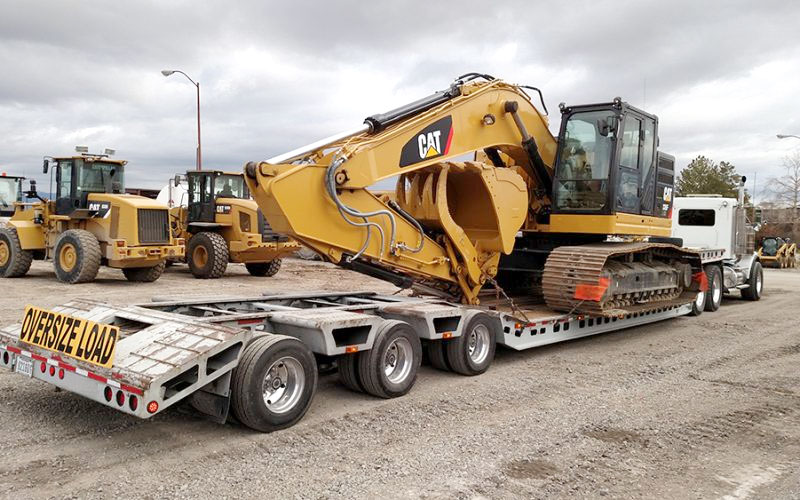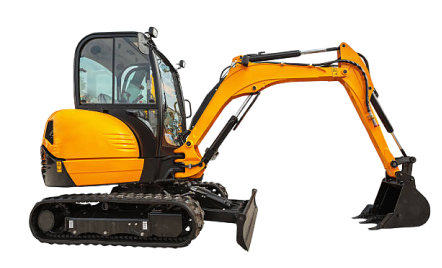The Basics Overview to Renting Excavators for Construction Projects
Renting out excavators for building tasks is a critical decision that requires a thorough understanding of different variables to make certain both effectiveness and cost-effectiveness. From picking the suitable excavator kind and size to making certain and negotiating rental terms safety procedures, each step plays an essential function in the overall success of your task. Understanding these elements not just optimizes productivity however also helps in reducing costs. As you take into consideration the intricacies of leasing excavators, it's important to understand the nuances that can substantially affect your task. What are these subtleties, and just how can they affect your building outcomes?
Sorts Of Excavators
Excavators can be found in different kinds, each designed to carry out specific jobs in construction projects. The most usual kind is the standard excavator, also referred to as a spider excavator, which is ubiquitous on a lot of job websites for its convenience in digging, material, and trenching handling. These machines operate tracks, giving stability and movement over irregular terrain.
Another vital variation is the mini excavator, treasured for its compact dimension and agility. Suitable for small to medium-sized projects, mini excavators master restricted areas where larger devices would certainly struggle. They are often made use of for landscape design, energy work, and small-scale demolition.
For projects needing prolonged reach, the long-reach excavator is indispensable. Equipped with a longer boom and arm, these devices can work in areas that are hard to accessibility, such as throughout water bodies or deep excavations.
Lastly, there are customized excavators like the suction excavator, which makes use of high-powered fans to vacuum up dirt and debris, making it ideal for fragile underground utilities. The dragline excavator, another specialized type, is usually utilized in large-scale civil engineering jobs like canal dredging and mining because of its capacity to lift hefty loads over fars away.
Picking the Right Dimension
Choosing the suitable dimension of an excavator is vital for the efficiency and success of any building and construction job. The size influences not only the device's capacity to handle certain tasks however also the operational expenses and website ease of access. Excavators can be found in various dimensions, from small systems appropriate for small-scale household jobs to big devices developed for considerable commercial or industrial tasks.
When making a decision on the excavator dimension,Comprehending the range of the job is crucial. For restricted tasks or rooms requiring precision, such as trenching for utility lines, a small or tiny excavator is suitable. These machines provide agility and convenience of maneuverability without jeopardizing on power. Conversely, large-scale earthmoving procedures, like roadway construction or large foundation digs, demand using basic or huge excavators. These models use superior reach, better bucket ability, and exceptional digging force.
Think about the website's surface and access factors too. Bigger excavators might face obstacles in irregular or tight areas, making smaller sized models a lot more useful. By extensively reviewing these aspects, construction managers can ensure they pick an excavator size that maximizes productivity and minimizes job delays.
Rental Contract Basics

Similarly essential is the comprehensive malfunction of costs. This includes the everyday, weekly, or regular monthly rental prices, and any additional fees such as cleaning, gas, or delivery fees. It's recommended to ask about possible fines for late returns or damages to prevent unexpected costs.
The problem of the excavator at the time of rental must likewise be well-documented. Make certain the arrangement consists of a complete assessment record that notes any kind of pre-existing damages. This safeguards you from responsibility for concerns that existed before your rental period started.
Insurance policy coverage is an additional essential aspect. Confirm whether the rental business provides insurance or if you require to secure your very own policy. Lastly, comprehend the terms for equipment repair and maintenance. Recognizing your responsibilities for over at this website maintenance throughout the rental duration will help keep the excavator in optimal functioning condition, lessening downtime and improving job effectiveness.
Upkeep and Security Tips
When taking care of excavators on a building and construction site, sticking to proper maintenance and security procedures is vital for making certain both functional performance and worker security. Lubing relocating components and making certain fluid levels are optimum can stop pricey downtime and prolong the machine's operational life-span.
Operators needs to be completely trained and licensed to deal with excavators, understanding the equipment's limitations and controls. It's essential to perform daily evaluations, focusing on security features such as alarms, seat belts, and emergency situation shutoff switches over.
Implementing a robust maintenance schedule and cultivating a society of safety and security can mitigate dangers substantially. Constantly consult the producer's manual for certain maintenance periods and safety standards. By focusing on these facets, construction projects can proceed efficiently, decreasing disturbances and ensuring a risk-free working environment for all employees entailed.
Cost-Saving Approaches
When renting out excavators for building and construction tasks,Efficient cost-saving methods are critical for maximizing the return on financial investment. One essential strategy is to conduct a comprehensive requirements evaluation before rental. Understanding the details requirements of your job helps in selecting the right type and dimension of excavator, avoiding unneeded expenditures on excessively specialized or extra-large equipment.
Another essential strategy is to discuss rental terms. Numerous rental business use flexible rates structures, particularly for lasting leasings. Developing an excellent relationship with the rental provider can also lead to loyalty discount rates and much better terms. In addition, scheduling in development can occasionally safeguard reduced rates compared to final rentals.

Lastly, think about the overall price of possession, including transport, insurance, and fuel. Packing these solutions with the rental arrangement can usually cause an extra beneficial general bundle. By applying these techniques, building and construction projects can attain substantial cost performances while making click for info certain functional effectiveness.
Conclusion
In final thought, the tactical selection and service of excavators for construction jobs necessitate a comprehensive understanding of excavator types, ideal sizing, and the intricacies of rental contracts. Implementing cost-saving approaches with precise planning and arrangement can better improve project productivity while controlling expenditures.
From picking the construction rollers suitable excavator type and dimension to guaranteeing and negotiating rental terms security methods, each action plays a pivotal duty in the overall success of your project. heavy equipment rental Bremen GA. The most usual type is the conventional excavator, likewise understood as a crawler excavator, which is common on most task sites for its convenience in trenching, product, and digging handling. By completely assessing these elements, building and construction managers can guarantee they select an excavator size that optimizes efficiency and minimizes job delays

Understanding your responsibilities for upkeep during the rental period will help preserve the excavator in ideal functioning problem, lessening downtime and boosting task performance.
In verdict, the strategic option and rental of excavators for building jobs demand an extensive understanding of excavator types, proper sizing, and the complexities of rental arrangements.
 Daniel Stern Then & Now!
Daniel Stern Then & Now! Barry Watson Then & Now!
Barry Watson Then & Now! Heather Locklear Then & Now!
Heather Locklear Then & Now! Bill Cosby Then & Now!
Bill Cosby Then & Now! Terry Farrell Then & Now!
Terry Farrell Then & Now!